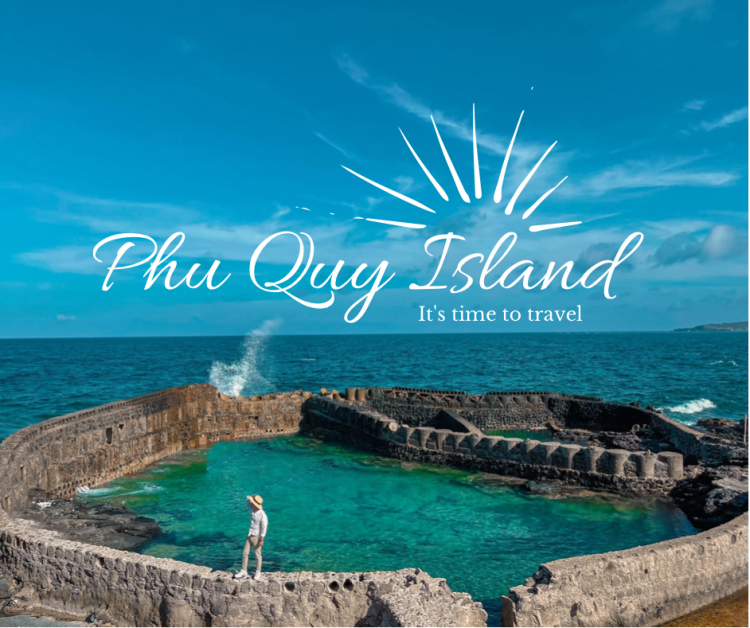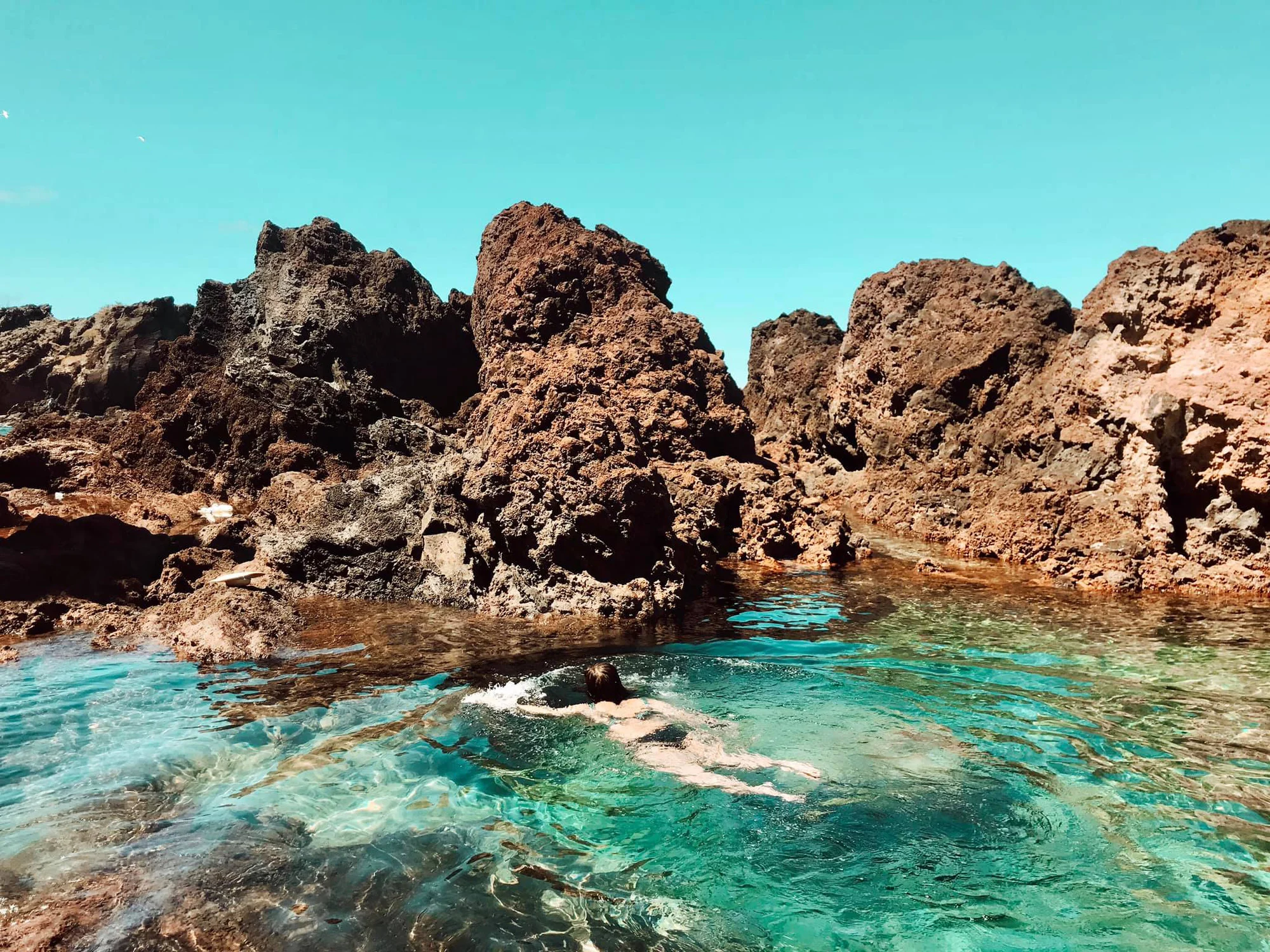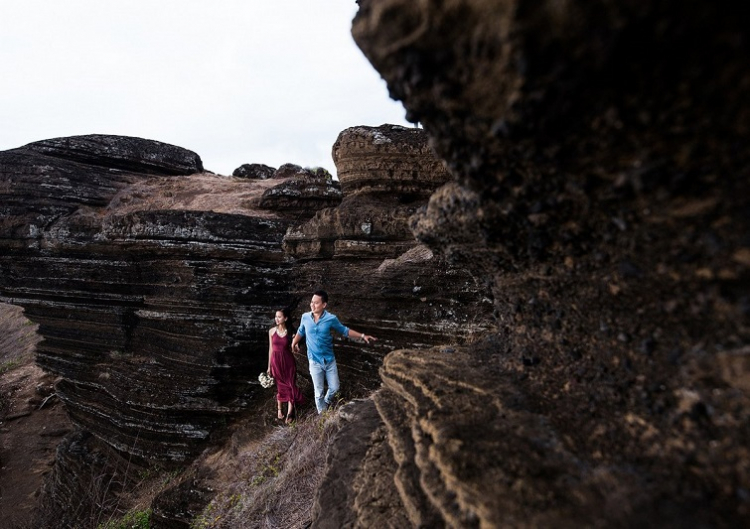What Makes Phu Quy Island Special?
Overview about Phu Quy Island
Like other such islands in Vietnam, Phu Quy is on the cusp of a tourism boom: its name is on the lips of most young Vietnamese backpackers, and developers are scouting the island for suitable locations to build.

Phu Quy Island
120 kilometers away from the mainland of Phan Thiet Province, the entire island lies in the East Sea. The island will capture your heart with its natural beauty, as it hasn’t been spoiled by heavy construction. Of course, the essential infrastructure and facilities are still available, such as roads, ports, ferries and small hostels, ensuring a comfortable travel time.

Phu Quy lighthouse
Administratively, Phu Quy Island is a district of Binh Thuan Province. It consists of 3 communes, nearly 5500 households with more than 20,000 residents in an area of 16.5 km2. Among the 3 communes, Tam Thanh, located in the southwest of the island, is the largest and busiest. As the main fishing and commercial port is situated here, it is not hard to explain the liveliness of Tam Thanh commune. After going on excursions to discover spectacles around the island, this is where you return for accomodation, amenities and endless options of local delicacies. Ngu Phung, in the west of the island, brings a completely different atmosphere. Sitting under Phu Quy Lighthouse, it is a small, peaceful community with its own fishing fleet. Finally, Long Hai, in the northeast, attracts visitors with distinctive rock formations of Cao Cat Mountain.
For foreign tourists, travel permits must be obtained to visit Phu Quy Island. Though it may take a bit of time and money, there is almost no hassle in the procedure and the travelling experience in the end is well worth the effort.
What Makes Phu Quy Island Special?
There are many reasons to visit Phu Quy island at least once during your trip to Vietnam. Here explains why Phu Quy has become increasingly hot among travel lovers, especially the youth.
1. Stunning, Untouched Sights

Phu Quy Island, meaning ‘Island of Precious Riches’ in Vietnam
The island is a hidden treasure for avid travellers, with many islets spreading around the area, all of which offer picturesque views into the ocean. You can also find crystal clear beaches with smooth white sand, making it perfect for swimming or strolling along the coastal lines.
The main island of Phu Quy resembles flat slabs of rock stacking together, with exceptional undulations emerging here and there. For rock climbing enthusiasts, northwestern Phu Quy Lighthouse and northeastern Cao Cat Mountain would definitely satisfy your desire.

Cao Cat Mountain
Walking inland, the area is widely forested and agricultural. Most of the land is divided into rectangular lots where fruit trees are grown. A variety of tropical fruit can be found, such as banana, mango, coconut or jackfruit; but the most striking one is pandanus tectorius, a type of screwpine with exotic, pineapple-like shape.
Though it has been inhabited for a very long time, with a population quite large compared with other offshore islands, the island retains most of its natural beauty. Residents of the island, by maintaining a rustic lifestyle through generations, have civilized the area with minimum damage towards the environment.
Nevertheless, Phu Quy Island is facing a serious environmental issue, plastic pollution. So far, the attractions around the island have not been affected, the water is still one of the cleanest around Vietnam, the marine life (consisting of colorful fish and impressive coral reefs) is still impressive. Yet, the presence of litter (which is likely to increase with the rising popularity of the island) is posing a major threat to the area. If you are planning to visit Phu Quy, please contribute to the environment saving efforts of local authorities and citizens by putting your trash in the right place and bringing reusable items for usage.
2. Significant Historical Values
Ask local people around the island and they will say Phu Quy used to be deserted hundreds of years ago. Legend has it that the first person to set foot on the island was a Cham princess who was exiled from the mainland for disobeying the king’s command. Not so much evidence has been found, but it is believed that humans have been present on the island for one to two millennia as the island lies in one of the main shipping lanes in Asia during ancient times. Due to its far-off location from the mainland, Phu Quy Island has also been a place for escapees. The officials of previous dynasties, the French colonials, political prisoners, … the island has witnessed all the twists and turns in the history of the region.
Nowadays, as Vietnam claims sovereignty on the island, the national military officials and residents on Phu Quy Island are making their best efforts to treasure it. From an uninhabited island, Phu Quy has turned into a developed territory with paved roads running throughout the area, highly protected harbors, substantial embankment shoring up exposed bays. The whole district has been supplied with electricity and internet, erasing the limited access to information due to physical distance from the mainland.
The people here are well aware of the difficulties of living far away from the mainland. Yet, many choose to spend a major part of their life (to some, their entire life) on the island, endearingly call it their hometown, and later, pass on the affinity to the next generation.
3. Diverse Religious Temples and Shrines
For a remote location with a small population, the variety of places of worship in Phu Quy Island is quite impressive. You can find different kinds of religious buildings here, including Catholic church, Buddhist monasteries, Cao Dai Temple and ancestor shrines. Most of them are well-kept and colorfully decorated, reflecting the diverse but harmonious spiritual life of the local people. Visiting these places is quite an interesting experience as it gives you a unique feeling of tranquility, while admiring the intriguing architecture and discovering the fertile culture of the island. If you don’t have enough time to drop by all of them, here is our suggestion for the most fascinating houses of worship.
Van An Thanh Whale Temple: Located right behind Phu Quy Port, the name of this shrine provokes the curiosity of anyone who comes to the island for the first time. Walking into the temple, your attention will be instantly diverted to the gigantic whale skeleton. Strange as it may sound, whale worship has been a long running tradition in Vietnam’s fishing villages for many centuries. Fishermen consider the colossal mammal as a sacred creature and believe it will protect them from natural catastrophe. That’s why the temple is also known as ‘Nam Hai Lang’, meaning The Mausoleum of The Grandfather of the sea. A small tip for foreign tourists, ask your hotel receptionist to make an arrangement before visiting the temple because the keeper, the one holding the key of the skeleton exhibition room, is usually not present and doesn’t speak English.
Linh Quang Pagoda: One of the most striking structures on Phu Quy Island, Linh Quang Pagoda comes in the shape of a multi-level tower. It is visible from almost anywhere on the island, with flashy pillars, tiles and statutes. Lying right in the middle of Tam Thanh Commune, it can be easily accessed and is definitely worth paying a visit.
Linh Son Pagoda: Moving to the eastern side of the island, you will find Linh Son Pagoda, the temple with one of the most stunning views. The temple is just below the peak of Cao Cat Mountain, so you need to reach the place via a steep staircase. At the top is a complex of religious structures, including prayer rooms, sophisticatedly ornamented altars, benches where sightseers can sit and gaze at the broad view of the island. And that’s not all Linh Son Pagoda has to offer. As you continue walking on a curling set of stairs, you will get to a shrine at the peak. The breathtaking view of Phu Quy Island from one of the highest points is absolutely a huge reward for your consistent endeavor.
On Ngu Phung Commune, you will find a Catholic Church as well as Cao Dai Temple. Cao Dai is a native religion established in southern Vietnam in the 1920s. Like any other set of beliefs, the worship house of Cao Dai clearly depicts the religion’s dogma. Inside every Cao Dai Temple, there is representation of the Divine Covenant of the Third Alliance, which was delivered by the honourable saints Victor Hugo, Sun Yat Sen and Nguyen Binh Khiem.
Translated by Bich Huong






































Comments (0)